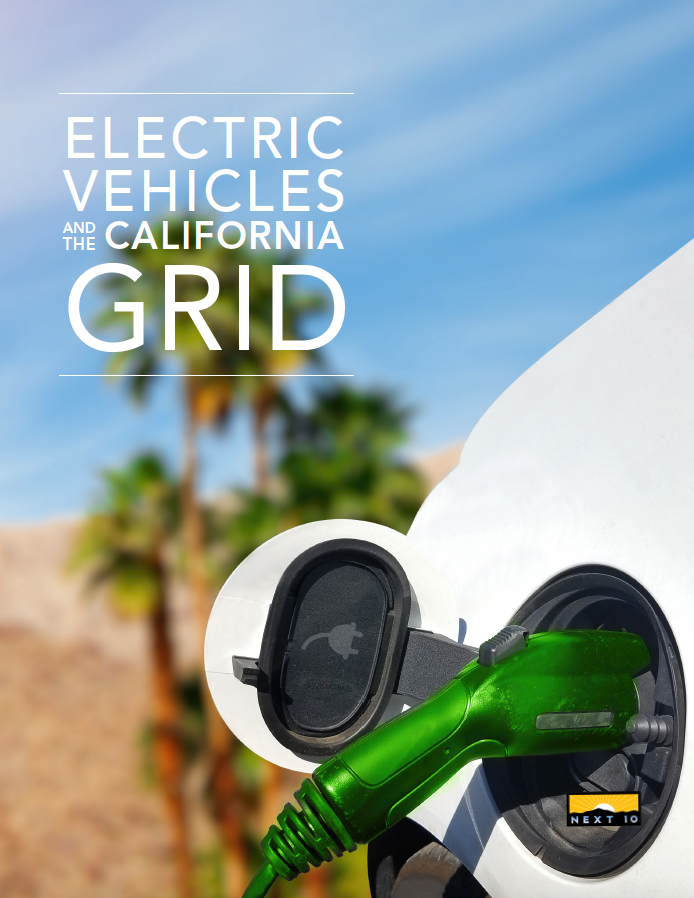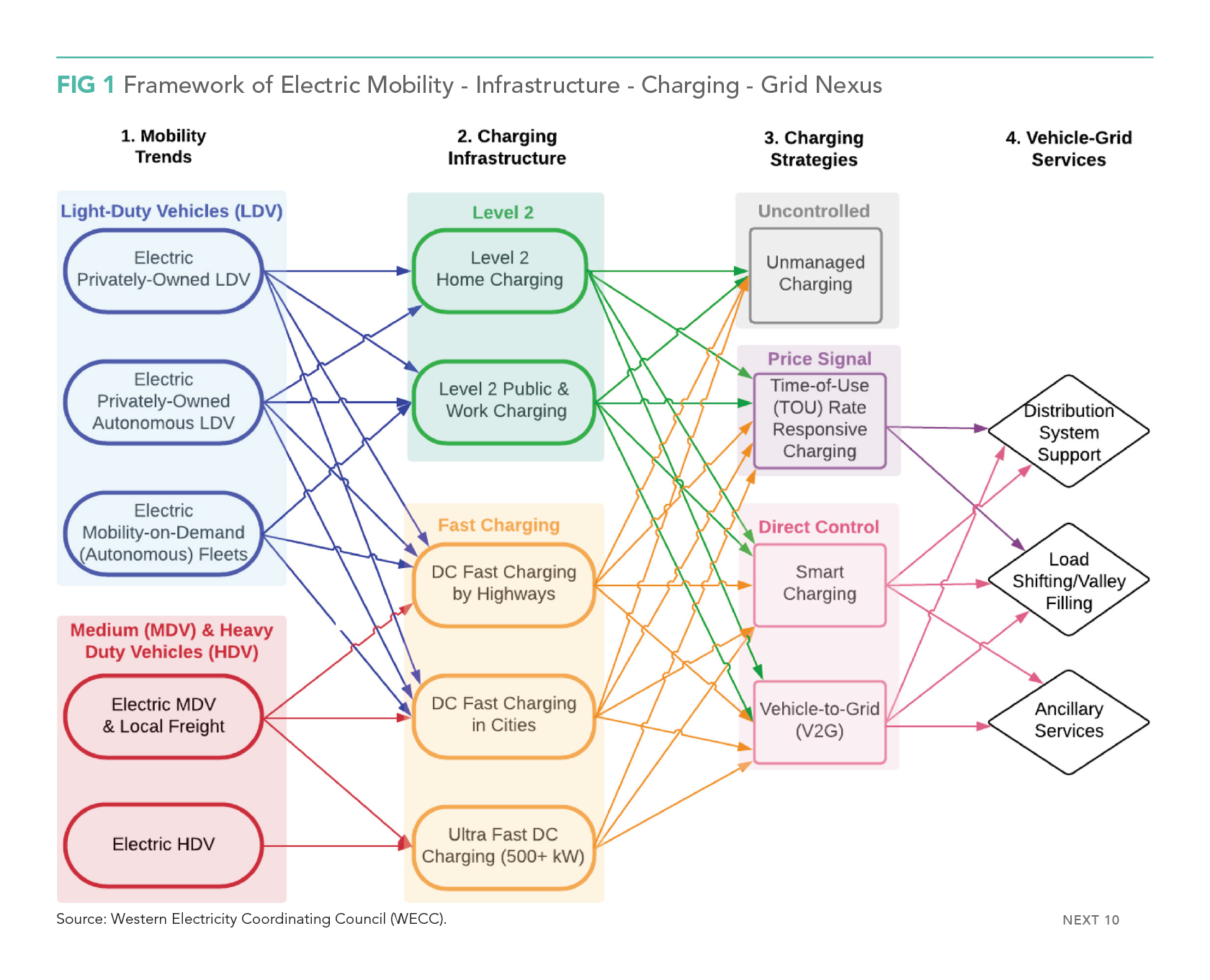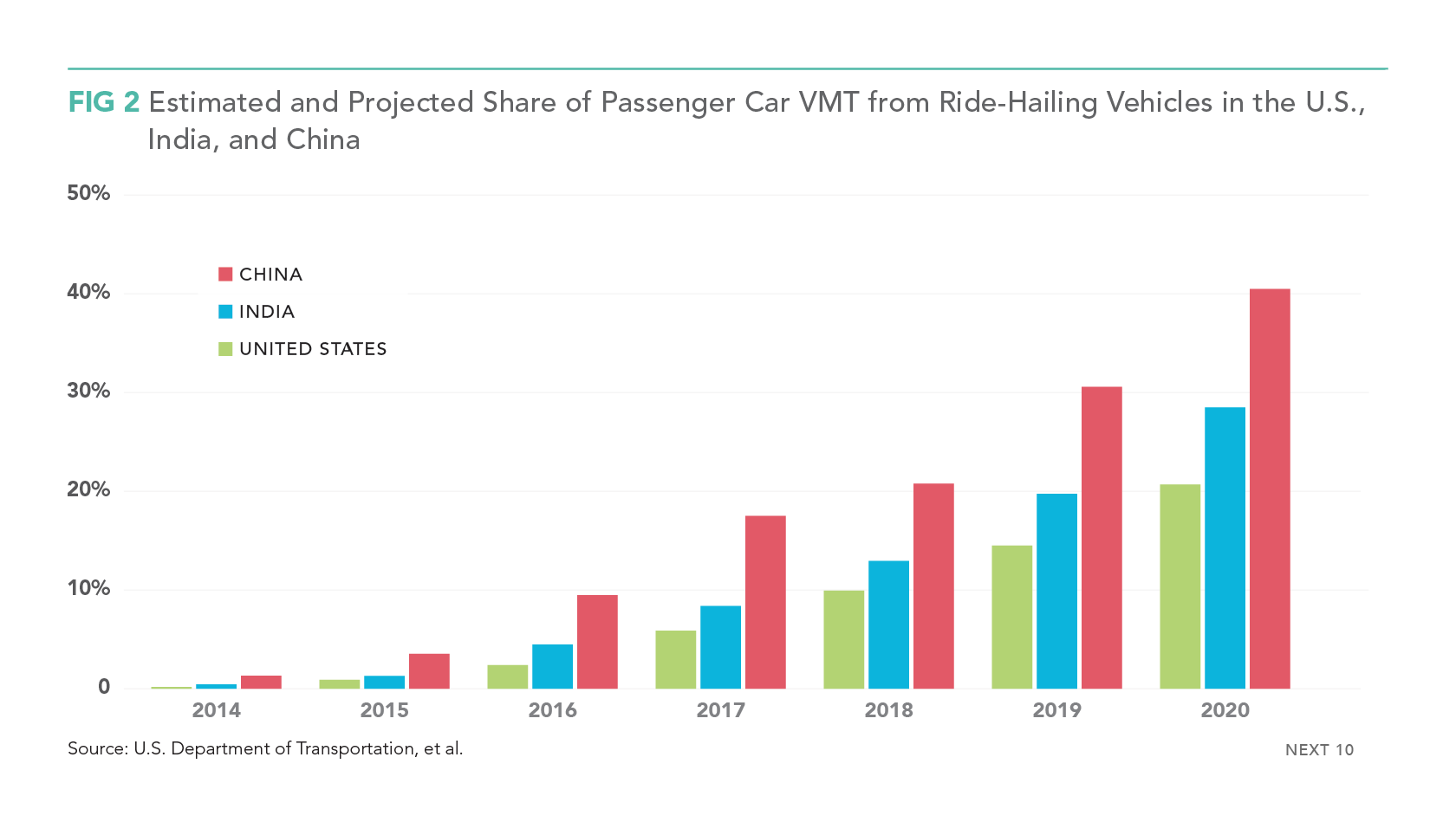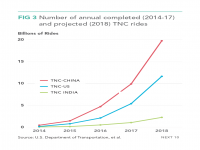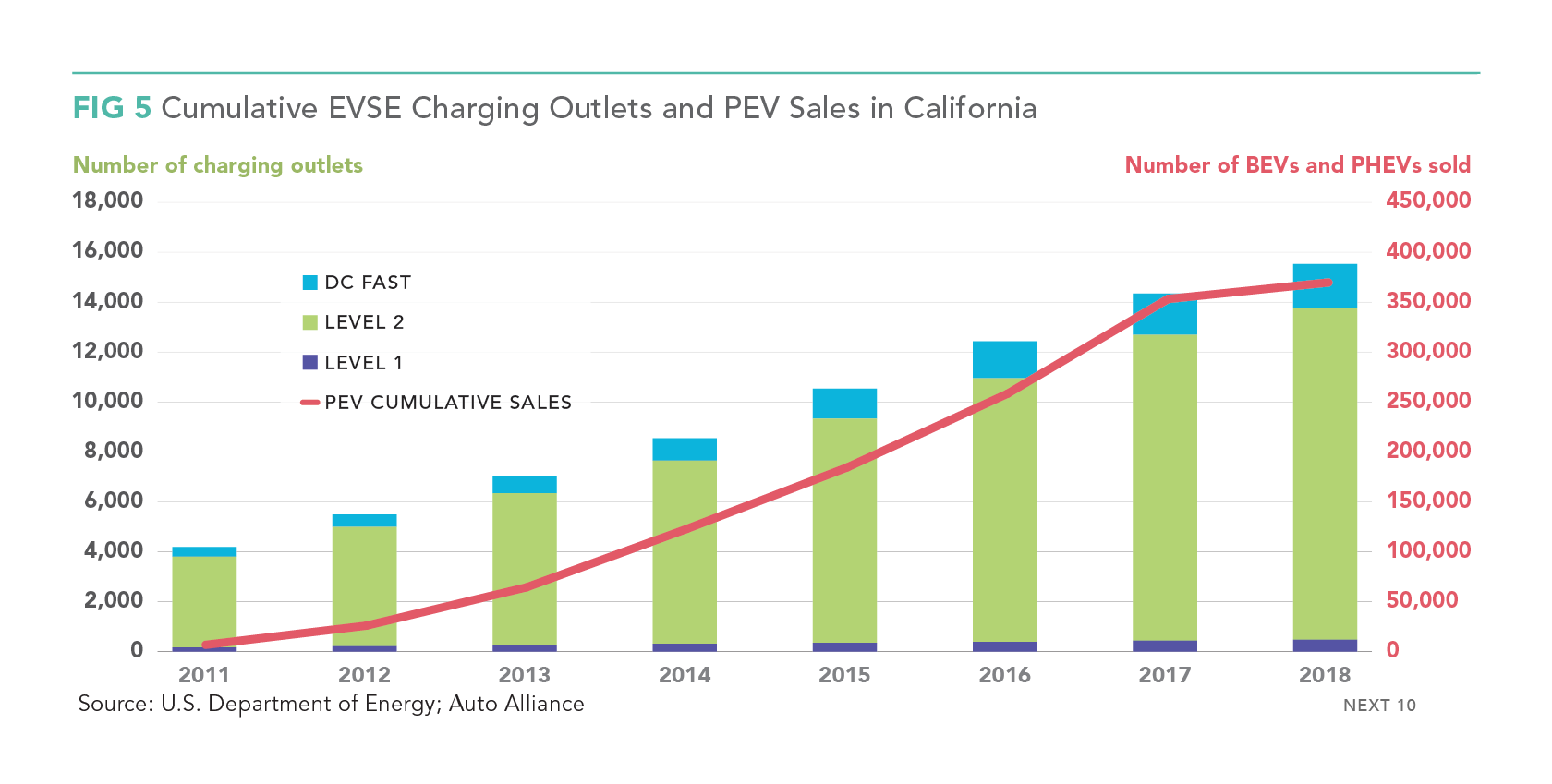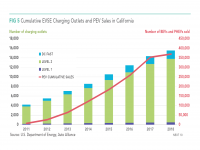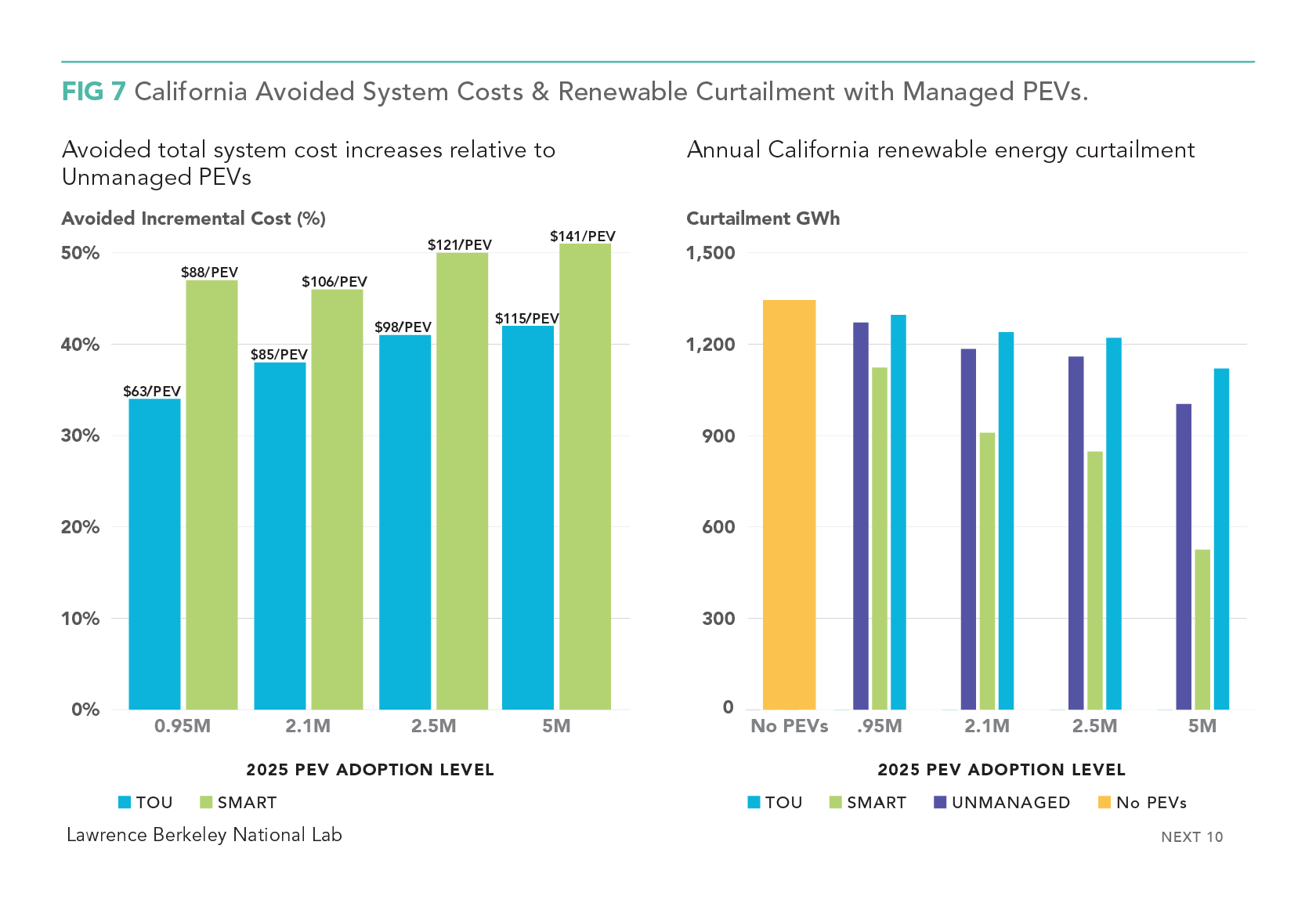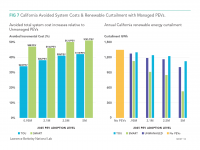Publications
Electric Vehicles and the California Grid
Together with the state’s shift toward low-carbon generation of electricity, electrifying transportation is a key pathway for California’s clean energy strategy. Electric Vehicles and the California Grid finds that the California grid is well placed to handle rapid growth in plug-in electric vehicles (PEVs), but advance planning and smart policy can ease the transition for the state’s power system.
California currently has about 369,000 plug-in PEVs. In order to reach Gov. Jerry Brown’s goal of 5 million PEVs by 2030, sales need to grow significantly. Also on the horizon: electric medium- and heavy-duty vehicles, and the prospect of private vehicle ownership being lowered by fleets of electric, self-driving PEVs.
Next 10 owns the rights to this publication. Any usage of content from this publication is subject to our Terms of Use. This report is part of Next 10's California Grid series.
- Energy demand is only modestly increasing as PEV sales surge.
- The California Energy Commission forecasts that 3.9 million PEVs would add about 15,500 GWh of charging demand, equivalent to just about five percent of California’s total 2016 energy load.
- In a more individual context, a Chevy Bolt driven 50 miles a day uses the same amount of electricity as an air conditioner cooling a 3-bedroom home for just three hours.
- Transportation trends towards automation and increased usage of mobility services like ride-hailing could rapidly expand the share of electric vehicles on the road, further increasing electricity demand.
- The estimated share of total light-duty vehicle miles traveled from ride-hailing vehicles could double from 10 percent to 20 percent between 2018 and 2020, based on projections from ride-hailing companies.
- If regulators choose to require that these fleets move toward PEVs, this could have significant impacts for infrastructure and charging needs.
- The growth of electric vehicles in California will require upgrades to the energy system, but the costs are likely to be low compared to the benefits.
- The authors' analysis shows that if California were to move to smart charging of the five million electric vehicles targeted by Governor Brown's goal, it could help reduce the amount of curtailed renewable energy by 50 percent in 2025.
- According to the California Public Utilities Commission, flexible EV charging can generate resource cost savings of $100-200 million per year for the power system, compared to unmanaged EV charging.
- New management strategies can help optimize potential benefits and minimize potential risks of more PEVs needing more electricity, but are challenging to implement.
- Managed charging programs—such as time-of use charging, which shifts charging to off-peak hours—could lessen stress on the grid, lower operating costs, and help integrate intermittent renewable energy.
- Smart charging—which allows active electric vehicle charging to be turned on or off to coincide with times of low wholesale prices or high renewable generation—can curb incremental system operating costs and reduce renewable energy curtailment.
- Such programs require well-designed, behaviorally aware incentives to entire large numbers of PEV owners to participate in them.
- The authors' analysis indicates that if California were to have 5 million PEVs on the road by 2025, the state would be able to reduce renewable energy curtailment by 50 percent.
Next 10 owns the rights to all graphics in this section, and they are available for download and limited use, subject to our Terms of Use. Please contact Next 10 at info@next10.org with any questions.
